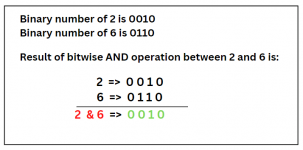Tutorial
Updated
DS Programming for Newbies!

Table of Contents:
Introductory Chapters:
- Preparing the environment
- Variables!
- Functions!
- Operators in C
- Conditions - if/else Statements and switches
- Looping - for() and while() Loops
- Containers of Variables - Arrays and Structures
Practical use of libnds:
Practical Use of NightFox Lib:
Excercises:
- Your first program!
- MODE-0 Tiled Backgrounds Example
- MODE-0 Tiled Sprites Example
- Our very first game: Tic Tac Toe!
Preface
Hello and welcome! If you are reading this then it’s likely that you’re interested in getting to know more about programming for the Nintendo DS! If you are not, then you likely took the wrong turn, but let’s not get into that. Let’s also start with establishing one important thing – as the title suggests, this is a “From Zero to Hero” guide. If you are an experienced programmer then it is likely that you will not benefit from it much, if at all. It is going to introduce the very basics to users who have never even seen a compiler before and never coded in their life – stuff that you probably already know and aren’t interested in anymore. You are however still welcome as this is my first tutorial and will likely require a certain degree of proof-reading, plus, you may of course have useful suggestions! Keep in mind the target audience though, I’m doing my best not to introduce complicated concepts early on. If you’re not an experienced programmer or never programmed at all, this is a great place to start!
I’ve seen many guides approaching this subject – some were more helpful, some were rather vague, but there is one thing that was common in all of them, and it became apparent to me that something has to be done about it. The guides I’ve seen so-far are dedicated to users who are familiar with programming and only require an introduction to the DS environment, none of them are actually “tutorials” from the ground up. Does this mean that a non-experienced user simply cannot program for the DS or should not begin his adventure with programming on this exact platform? No, it does not! In fact, the DS is likely the easiest platform to program for when it comes to consoles – libnds is really not that hard to wrap your mind around and there are numerous libraries out there that facilitate programming for it even further. You probably want to ask: “If it’s so easy, why do You think it requires some sort of an explanation? The libraries are well-documented, do you expect the readers to be dill-wits who can’t follow simple examples?” and the answer to that is “No, in fact, I do believe that everybody is capable of programming, however one has to learn and acquire some basic programming habits and have some practice in C to be successful at it” and this is exactly the main goal of this tutorial. Depending on the interest shown by users and my workload at Uni this may or may not be a full-featured guide, however I promise that I will at least try to keep it up-to-date and expand upon it from time to time.
Now that the purpose is established, let’s move on to the juicy parts! I hope you will enjoy learning together and in case of any questions or suggestions, do write! Dear readers, keep in mind that the first few tutorials will be an incredibly rapid course in C, applicable to any type of programming, not just for the DS! We won’t be compiling much until this material is covered and thoroughly understood! So… Let’s get it on!
Last edited by Foxi4,








